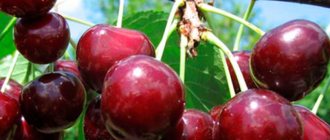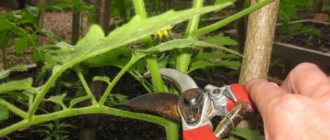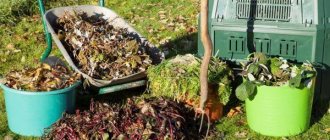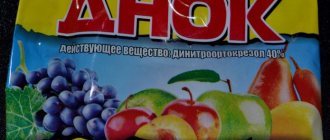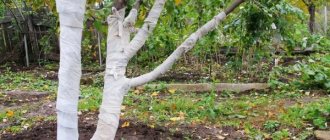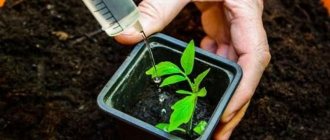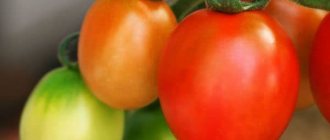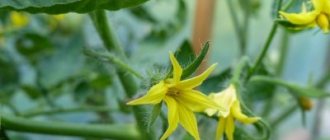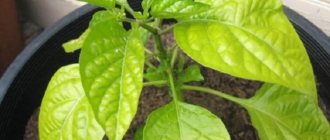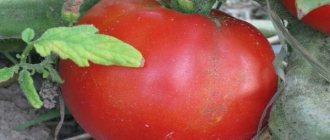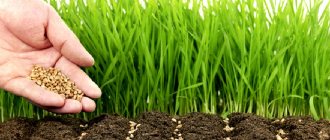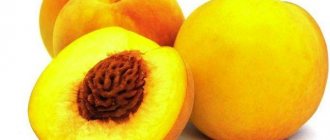Features and diagram of peach pruning in autumn for beginners
The pruning procedure is a very important step in caring for fruit trees, since it is necessary both to extend their life span and to increase the amount of harvest.
Regular removal of excess branches helps to create the most illuminated crown, which provides the following benefits:
- improved ventilation;
- easier harvesting;
- rejuvenation of the tree by removing damaged and dry branches;
- prolongation of productive life;
- stimulating the growth of young shoots and ensuring excellent yields;
- the tree takes on a neat appearance.
By pruning in the fall, the peach is prepared for winter. All necessary actions begin after harvesting the fruits, but no later than mid-autumn. The growing season will already be over by this time. Excision of the root shoots protects against the appearance of harmful insects.
The pruning scheme includes several step-by-step actions:
- It is necessary to cut off the upper branch at the very base.
- Removing the top side shoots that grow from the top branch along the top, leaving a couple of buds on the lower shoots.
- On the branches emerging from the trunk, or on the skeletal ones, it is necessary to leave such a number of buds as to create free space between them for the passage of light.
The number of branches depends on the level of fruiting. The higher the yield, the fewer branches need to be left. As a result, there should be from 80 to 200 branches left on the tree.
After pruning, it is very important to treat the cut areas with garden varnish. In addition, the instrument must be well sharpened and disinfected. It is not recommended to saw off branches. It's better to cut them off in one motion.
Work time
The first feeding of peach in the fall is carried out after harvesting. It begins in early August and continues until mid-September. Peaches ripen at different times, so the harvest period lasts at least 1-2 months.
At the same time, young seedlings begin to be planted. They also need to be fed so that they can better adapt to a new place, maintain immunity to protect against pests, and withstand winter cold snaps.
It is necessary to feed the plants a second time after 20–30 days. This period occurs from mid-September to early October. When applying fertilizers, you need to take into account the age of the tree; the amount of organic matter and minerals that need to be added to the soil depends on this.
How to fertilize a peach in the fall
Feeding the tree must be carried out along the furrows near the trunk. Fertilizers must be mineral (phosphorus-potassium complexes) and organic:
- young seedlings require feeding with manure or compost (9-10 kg), superphosphate (70-80 g), potassium salt (25-30 g);
- for 3-6 year old trees you need to add manure (14-15 kg), ammonium nitrate (55-60 g), superphosphate (110-115 g), potassium salt (45 g);
- at 6 - 8 years old, the tree needs manure (28-30 kg), superphosphate (170-180 g), potassium salt (65-74 g);
- When fertilizing adult specimens, you should take manure (25-35 kg), ammonium nitrate (115-135 g) and potassium salt (85-105 g).
Experienced gardeners recommend foliar feeding in the fall with a product containing urea.
Autumn watering regime for peach
To retain moisture in the soil, it is necessary to mulch the area around the trunk. In addition, this action helps suppress weeds and prevents the formation of soil crust.
Peaches can tolerate hot climates, provided there is sufficient moisture, so trees need to be watered several times a year: in early spring before flowering, during the period of shoot growth, before fruit ripening.
Autumn moisture-recharging watering, which moisturizes the soil, is necessary for a good wintering of the tree. For 1 square meter of tree trunk area, 5–6 buckets of water are required. If groundwater is present, the volume of water is reduced. To provide the land with air, it is necessary to drain the soil. Final irrigation procedures should be carried out no later than the first days of November.
Prevention of diseases and insects
Pest and disease control begins with prevention. Peaches suffer from a large number of diseases, especially if they grow in an unfavorable climate for the crop. You can treat a tree for pests at any time of the year.
Leaf curl is the most common peach problem. Characteristic signs are blackening and drying of the leaves. Gradually they fall off. If signs of curling appear, the affected shoots are cut off and burned. The plant itself is treated with Bordeaux mixture or the Abiga-Peak preparation. Spraying is carried out four times at intervals of 2 weeks.
Another cultural disease is moniliosis. If there are signs of moniliosis, the affected shoots are cut out and destroyed. Peach is treated with fungicides. For example, "Kuproksat" or "Zineb". Powdery mildew is destroyed using colloidal sulfur. The plant is sprayed the first time during bud formation and the second time after flowering (about 2 weeks).
Among insects, aphids are often found on peach trees. To combat it, use an infusion of garlic, dandelion or a soap solution. Among the chemicals used:
- "Decis";
- copper sulfate;
- "Dursabon";
- "Confidor".
Weevils often appear on plants. Copper sulfate or insecticides will help. After flowering, the trees are treated with Decis or Fitoverm. In autumn, tree trunk circles are dug up and fallen leaves are destroyed.
Rules for preparing peach for winter
Gardeners are constantly busy caring for fruit trees, which are the leaders of their garden plots. Throughout the year, many different activities are carried out aimed at obtaining a good harvest. Autumn work is no less important for preserving the fruit tree.
Digging and mulching tree trunk circles
The part of the earth located near the tree trunk, equal in diameter to the crown, is called the trunk circle. The process of mulching a given plot of land serves not only as an environmentally friendly design method, but also performs a number of other functions :
- decoration of the tree trunk circle;
- moisture retention;
- preventing the growth of weeds;
- introducing additional nutrients for the root system.
Materials for mulch can be:
- peat;
- fallen needles;
- sawdust;
- crushed bark;
- cones, cedar husks or other natural ingredients.
The thickness of the mulch layer should be at least 5 cm. To prevent the plant from starting to rot, it is necessary to leave a distance from the trunk to the mulch. This will allow air to circulate.
In order for a garden crop to survive the winter well, it is very important to properly treat the soil. Deep digging of the soil (no more than 10 cm) allows you to destroy the pests in it. At the same time, you need to take into account that the lumps should not be broken. You need to dig the ground no closer than 0.5 m from the trunk, otherwise you can damage the surface root system.
How to cover a peach for the winter (video)
Sheltering a young peach for the winter
The peach tree is very afraid of temperature changes, so to avoid the death of the buds or tree, proper preparation for winter is necessary. To preserve heat, the young tree needs to be covered.
- The first stage of work begins after leaf fall. It involves bending the seedling to the ground. The temperature must be above zero so that the branches do not become brittle.
- In order to spend less material on shelter, you should bend the tree as low as possible. The first step is to choose the side where it is better to persuade him. Then pegs are driven in, to which the rope is attached. Small branches are connected all together and tied to the main branch. At the same time, all actions must be careful so as not to break anything.
- Since old branches are difficult to deform, they can be cut off. Damaged areas should be lubricated with varnish.
- To protect against mice, which in winter can settle in the shelter and damage the tree bark, you need to place a special repellent in the center of the bush.
- After snow falls, you need to sprinkle it on the tree to create a snowdrift up to 25 cm.
- Instead of snow, you can use dry material, such as sawdust or other bulk materials (straw, old tops). Place plastic film or roofing felt on top.
When covering a fruit tree, it is important not to use very dense material, under which the tree can dry out.
Purpose and rules for spraying peach in autumn
To maintain the health of the tree and produce large fruits, it must be protected from external enemies. Spraying will help against diseases and parasites.
Autumn is a great time for fungal growth. Treatment will help destroy fungal spores so that by spring they do not spread to all branches. Then fighting them will take much more time and effort.
To achieve maximum effect, you must adhere to the established rules:
- the first step is to remove all fallen leaves and trim unnecessary branches;
- the day must be clear and calm, otherwise the rain will wash away all the chemicals;
- It is advisable to choose morning or evening hours for spraying;
- The spray should be fine and cover all parts of the plant.
By following all the recommendations, you can save yourself from additional costs for repeated spraying.
Protecting peach from sunburn
Due to sudden changes in ambient temperature and unfavorable winter conditions, damage called sunburn may appear on wood. All parts of the tree can receive such wounds, and at any time of the year.
To prevent burns, in addition to sheltering for the winter, it is necessary to properly water the tree and fertilize the soil. Before the onset of cold weather, the trunks and bases of skeletal branches must be whitened with slaked lime. To improve the effect, the tree should be sprayed with lime milk.
How to protect a peach from rodents in winter
It is necessary to protect fruit trees not only from frost, but also from rodents, otherwise the peach will die. There are 2 methods of protection:
- mechanical;
- chemical.
With the mechanical method, various materials are tied around the tree trunk and its branches (special nets for protection against rodents, roofing felt, coniferous spruce branches). When using dense materials, in order to avoid the formation of condensation, they must be removed during a thaw.
Trees can be treated with special repellent compounds. For example, a mixture of clay and cow manure with the addition of carbolic acid at the rate of 1 tablespoon per bucket of the mixture. A good rabbit repellent is a mixture of fish oil and naphthalene in a ratio of 8:1.
Types of fertilizers
To have a good harvest, use:
- mineral fertilizers;
- organic fertilizers.
Before feeding the peach in the fall, prune and mulch.
Mineral
Complex application of organic and mineral fertilizers is necessary. The latter include urea, ammonium nitrate, nitroammophosphate, wood ash, superphosphate.
You may be interested in: How to properly plant peaches in the spring How to properly plant a peach tree in the fall Varieties of peach varieties and selection of seedlings according to characteristics
Urea is a fast-soluble food, so the substance can be evenly scattered over the surface of the tree trunk or used when digging. This supplement is rich in nitrogen. Ammonium nitrate has 35% nitrogen. Fertilizing peach in the fall is carried out in the same way as using urea.
Nitroammophoska contains all the necessary substances. It contains nitrogen, phosphorus, and potassium. The percentage depends on the manufacturer.
Wood ash is the most budget-friendly way to fertilize a peach in the fall. It is enough to remove and burn all unnecessary foliage on the site to obtain a valuable substance. Ash contains a large amount of potassium. Add when replanting a plant or digging up the soil.
Organic
Organic fertilizers include peat, chicken manure, mullein, and compost. Such fertilizers contain all the necessary macro- and microelements. The substances do not have a negative effect on the fruits, which after treatment can be consumed without fear of the possibility of poisoning.
Chicken manure contains nitrogen, phosphorus, potassium and other necessary components. The introduction of the substance requires careful adherence to the dosage. If there is an excess of droppings, there is a risk of burning the peach roots.
The most affordable feeding of peach with organic fertilizers is the application of mullein. It can be either with litter or liquid.
Another organic fertilizer is compost. You can get it for free if there is a compost pit on the site, into which waste is sent, which is rotted and converted into a nutrient mixture.
Peach grafting technology in autumn
Grafting is the combination of some parts of different trees into one. Some gardeners graft varietal peach using a quince, apricot, plum or almond tree seedling as a rootstock.
The technology includes preparing cuttings of the required variety and further grafting onto a one- or two-year-old seedling.
Autumn grafting is successful only during prolonged warm weather . Early frosts can ruin all the results. The survival rate in autumn is very weak, so it is recommended to carry out such work in the spring.
A peach tree can be grown in almost any area, but in order for it to become established, it must be carefully cared for. For planting, it is advisable to choose an area protected from cold winds.
